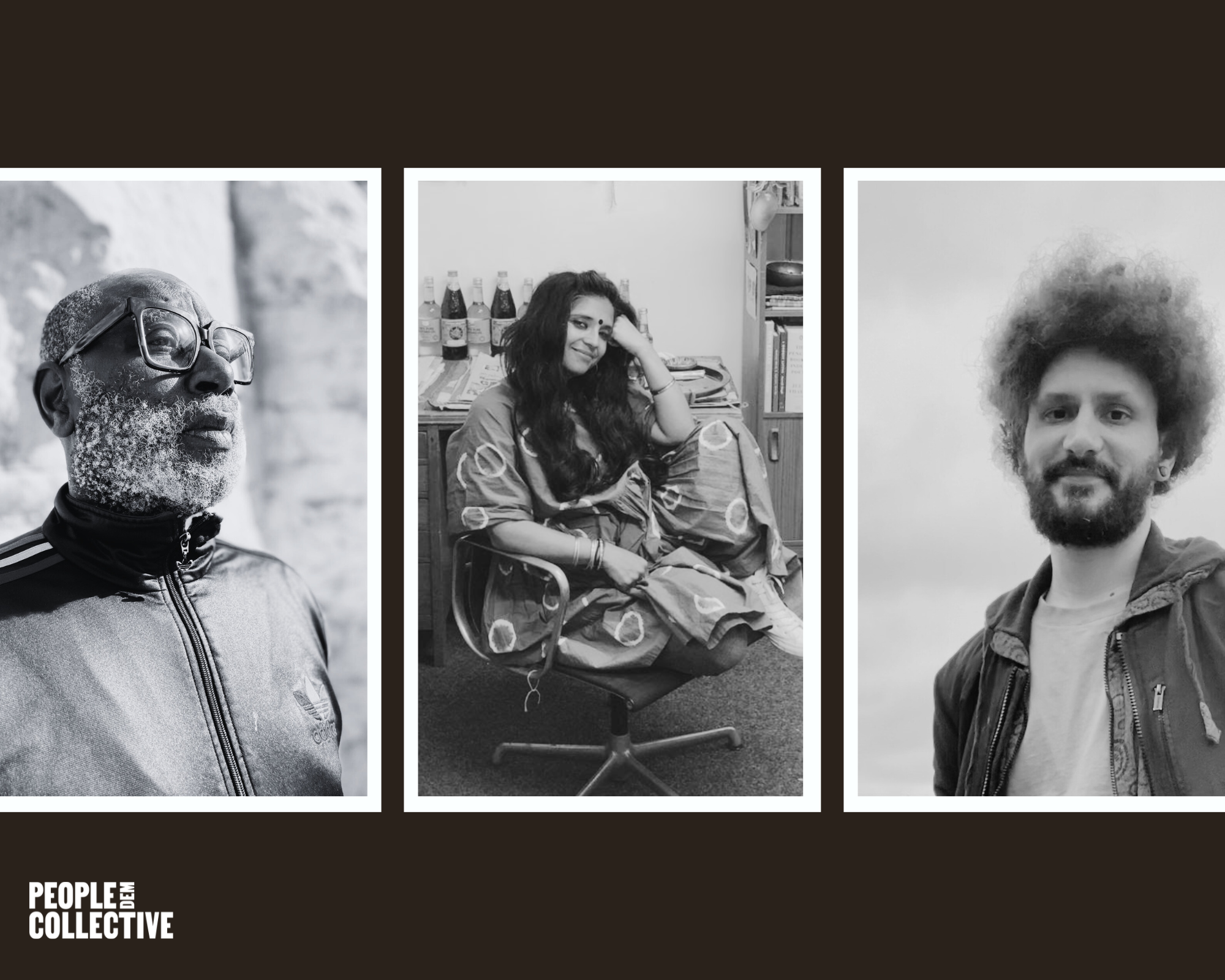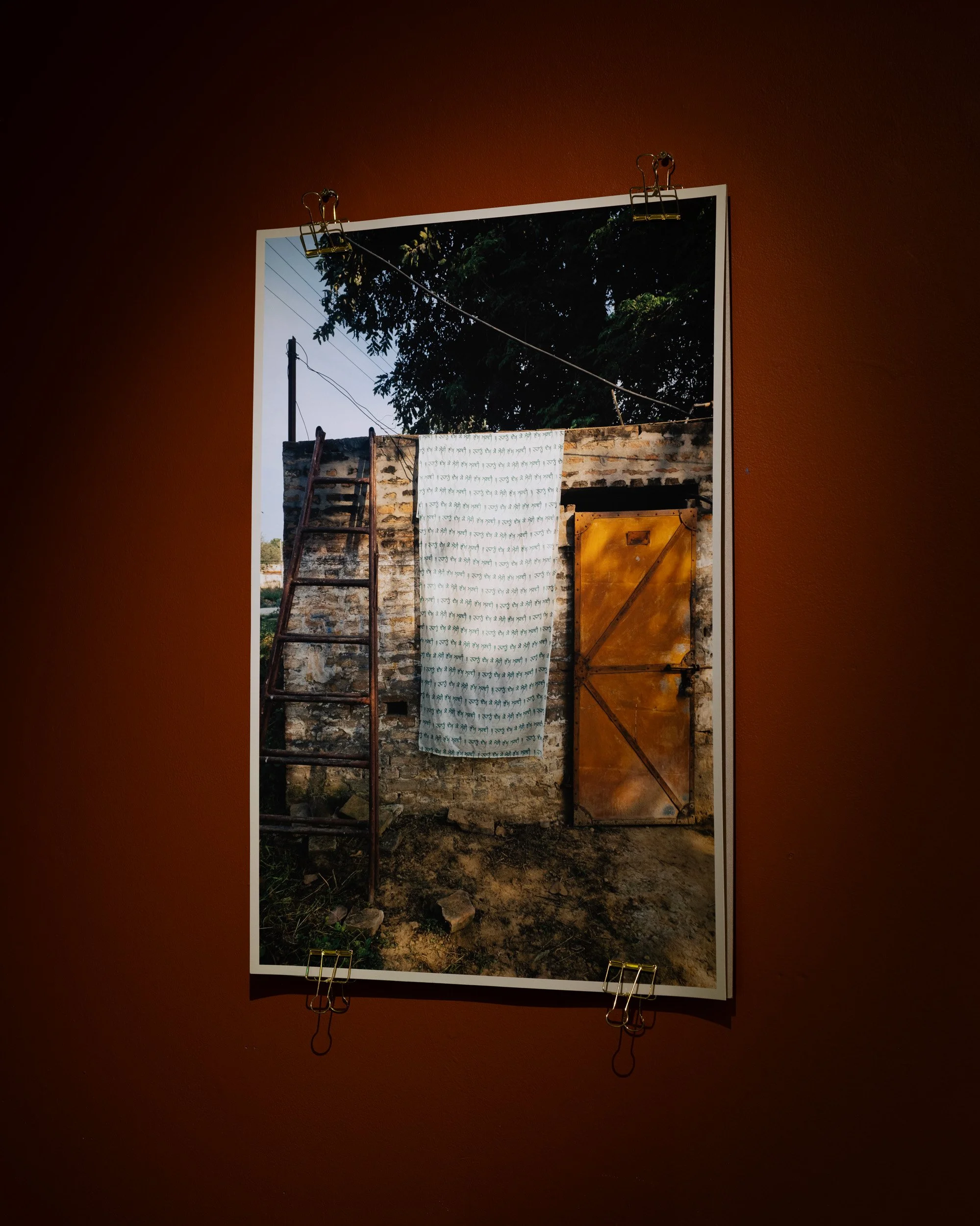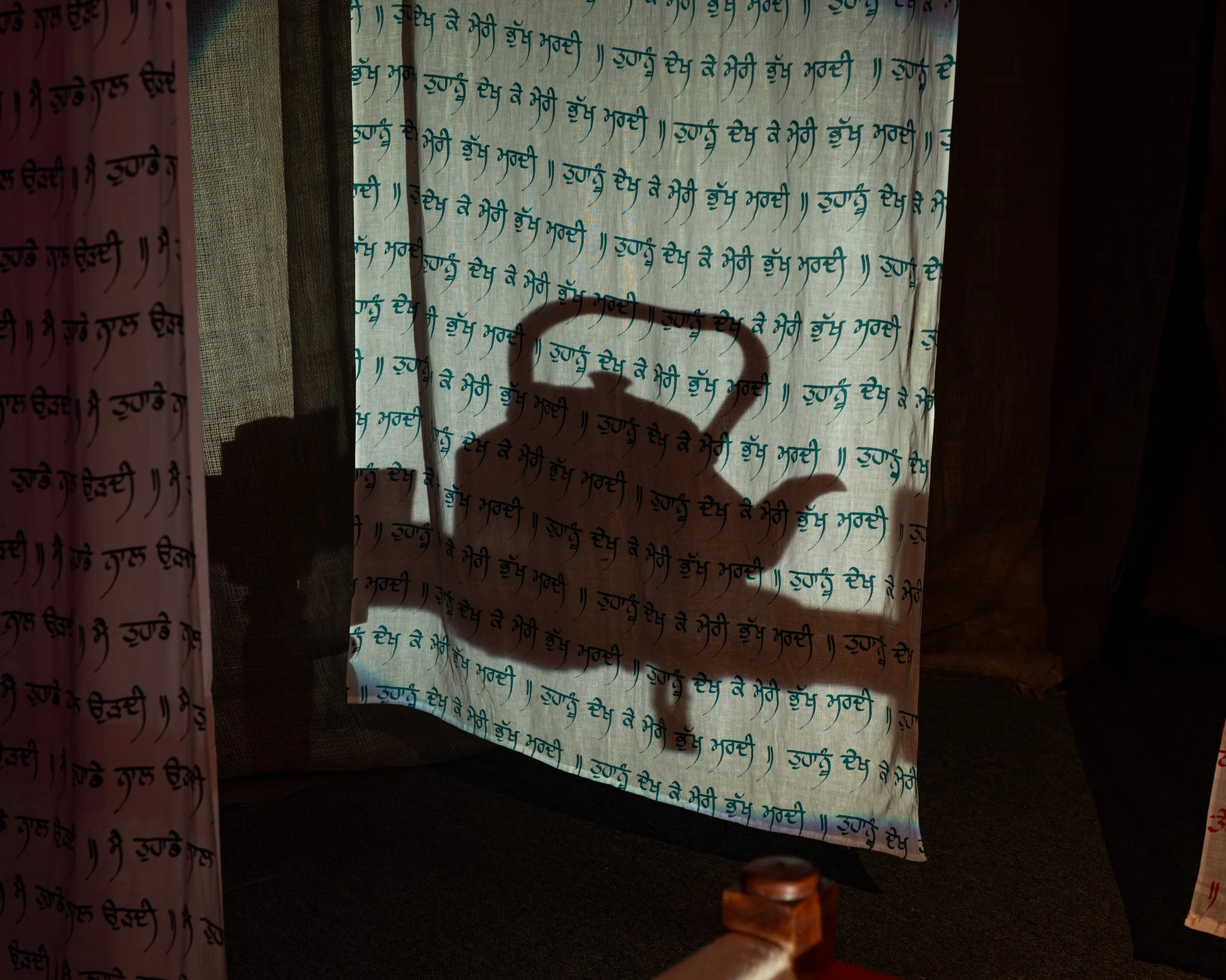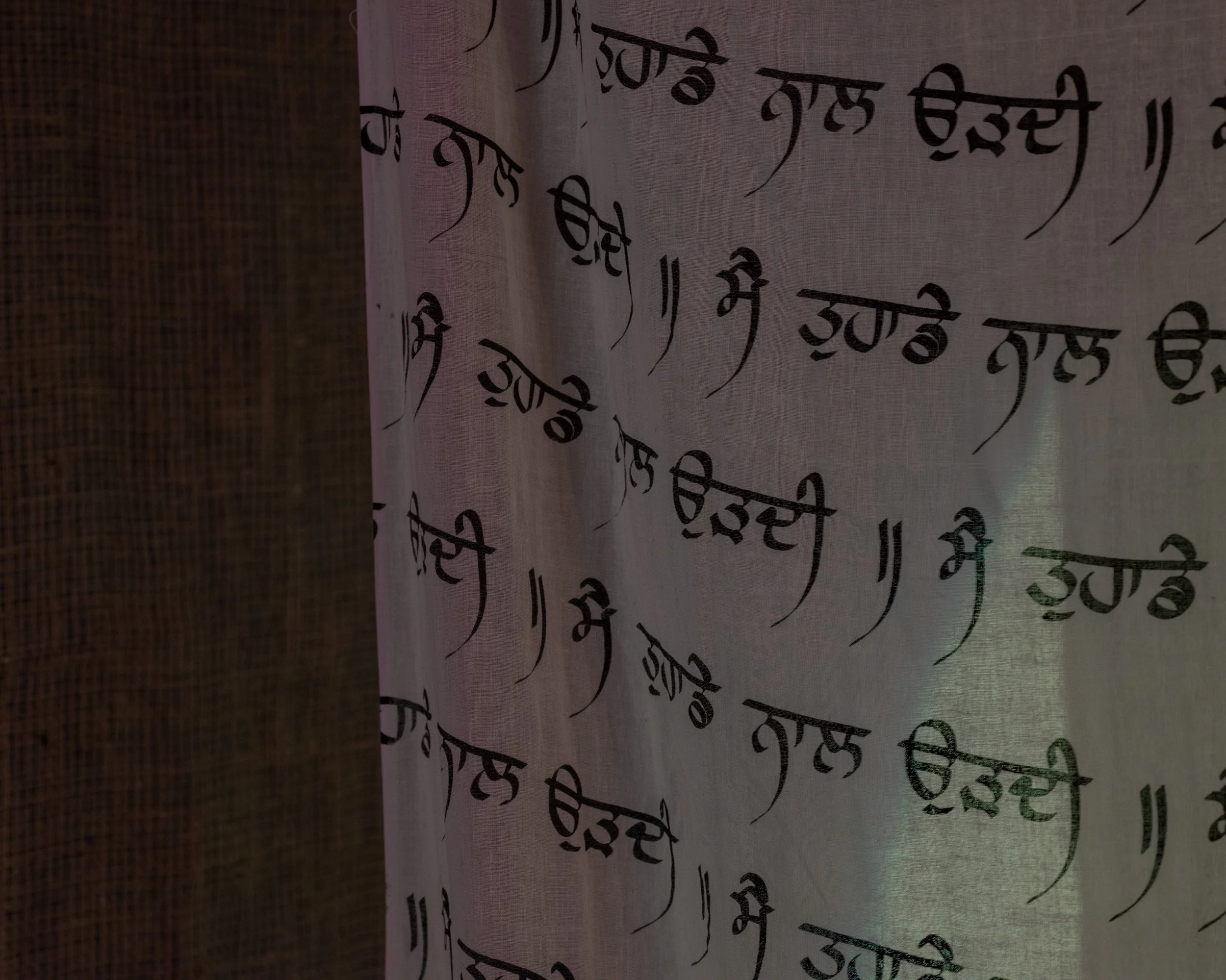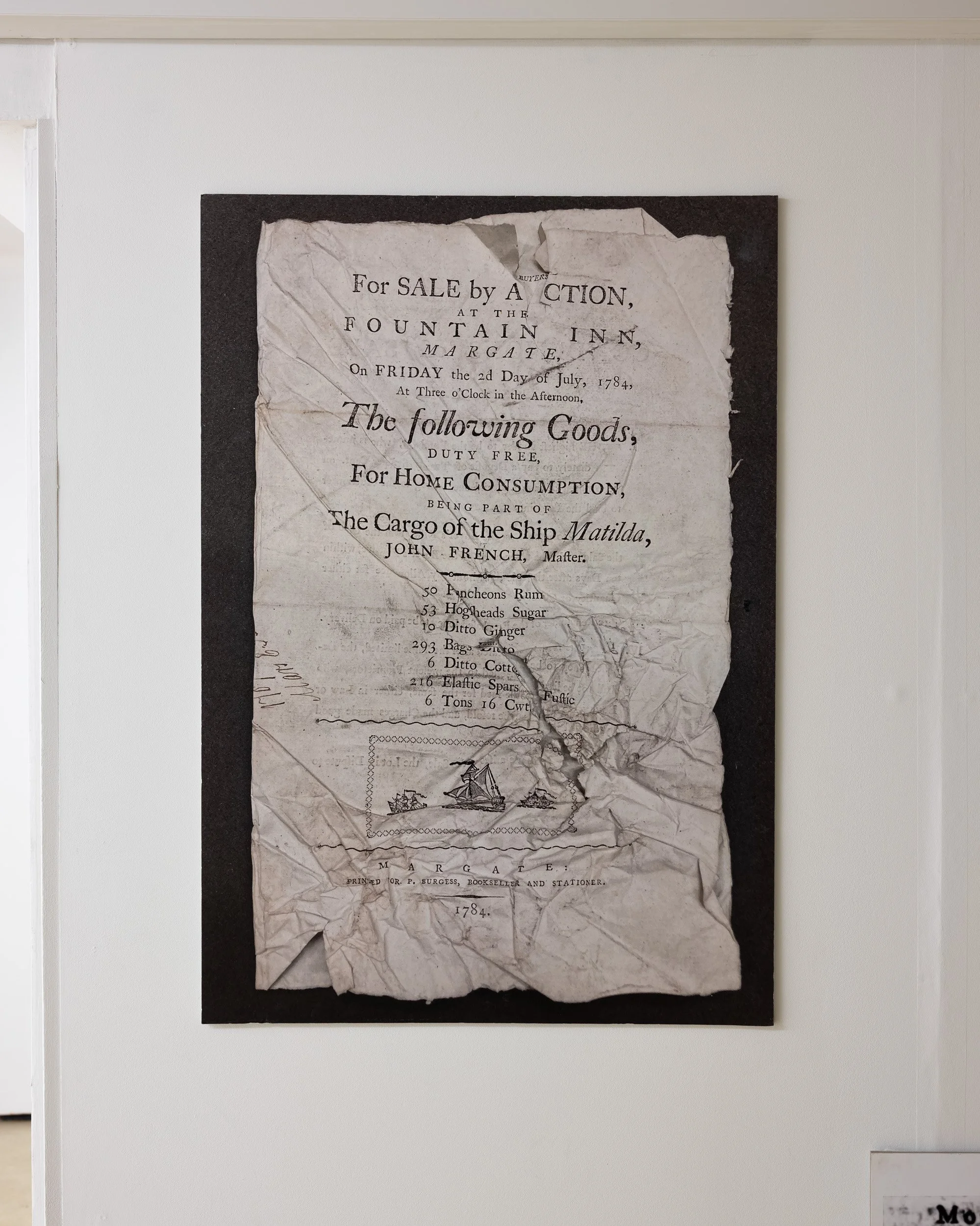People Dem Collective Residency at Quench Gallery
4 Years in Dreamland
Geoffrey Chambers, Jas Dhillon & Peter Nicholls
A retrospective of People Dem Collective’s resident artists Geoffrey Chambers, Jas Dhillon, and Peter Nichols, bringing together work they created or nurtured during their time with us.
This is not a show about their experience of Dreamland, but about the art that took shape in that period.
"Nurture means caring for something, giving it the time, space and conditions it needs to grow.”
For People Dem Collective, nurture is both a principle and a practice. It takes time, space, and care to allow something to grow and too often, the arts sector denies those conditions to the communities who need them most.
We are beginning a new chapter with a residency at Quench Gallery, Margate. This programme unfolds across three exhibitions and carries forward our long-term commitment to artists and communities who are too often left at the margins of the art world.
When we first moved into Dreamland, it wasn’t a studio complex but an abandoned office, harsh strip lighting above, tired blue carpet underfoot. A stopgap space while we waited for a building that never materialised. But even there, possibilities grew. We turned that office into our HQ, and from its corridors and corners the seeds of our residency programme were planted. What was once corporate became communal a place where artists could take risks, grow, and build relationships.
At Quench, we continue that work, offering time, space, and access to resources that are not always financial but are always vital: a room to breathe, mentors to walk beside you, collaborators to bounce ideas off, a system of care that feeds an ecosystem.
Our commitment has always been to our community. But our resilience has been rooted in spatial justice, in the fight for permanent space where Black- and Brown-led cultural work can thrive, rather than survive from project to project. Just as we incubate others, we too need systems, structures, and resources that nurture us. Without this, the cycle of precarity continues.
Through this residency, we aim to show up in different ways: as hosts, as collaborators, as supporters of curators and artists, and as advocates for permanent space that can sustain this ecosystem into the future.
Quench is very proud to host this exhibition which marks the first in a three part collaboration with PDC running between now and January. We hugely grateful for the support that PDC have given to us and massively excited for this new working partnership.
Geoffrey Chambers
Born in London of Caribbean heritage, I am an expanded arts practitioner based in Margate and steeped in the traditions, histories and culture across the Caribbean, Atlantic and Britain. I have a dynamic practice, including mark-making, performance, film and installation, focusing on Afro-surreal cultural texts that explore the relationship and assumptions surrounding cultural belonging, migration, identity and race through creating reparative formations.
Four Years in Dreamland
Oh, what a time that will be
Oh yes, we'll wait, wait, wait and see
We'll count the stars up in the sky
And surely we'll never die
- Bunny Wailer - Dreamland
This exhibition shows just a glimpse of what I’ve been working on during my time at the studios on 49 Marine Terrace. I first moved in at the end of COVID, my first project with the People Dem Collective, being the ‘Participate Village Fair’, and from the first day until our fractured moving, it’s been a mix of social practice, public engagement, mark making and playful performance. I’ve had the opportunity to take on some incredible projects and commissions - like creating a globe for The World Reimagined (now on permanent display at Rhodes House, Oxford), making the In Transit doors in Woolwich, and painting murals across Kent.
The work here isn’t meant to be a step-by-step timeline, but more a reflection of how my practice has been growing, changing and reflecting and developing - through photography, mark-making, painting, writing and ceramics. Dreamland has been a place where I could form groups, build joyful connections, and expand what I thought was possible in my art. I’m also deeply thankful to Arts Council England, the Ubele Foundation, Iniva, the BFI Network, and many others for their support along the way.
A big part of this journey has been the “Sunday Draw”, my regular drawing classes. Hosting these sessions has been a real joy and an essential part of my social practice, creating spaces for sharing, play, and community. Another strand of my practice, the Soulark Ensemble which continues to grow and surprise me in the best ways. I very much appreciate all the effort, food and care from all of the members.
My space Dreamland years - a windowless room and time for my dreams began to take shape, overlap and transform. Works that revolve around a personal reflection on loss, grief, re-memory, joy, childhood vulnerability, mental well being, letting go, release with emotional and spiritual ownership. There’s plenty of work I couldn’t fit in here, and much more still to come, but I’m happy to share these pieces now and hope you enjoy them as much as I did creating them.
In our restricted space where the bureaucracy of being in the space was both a blessing and a hinderance, where mice and foxes made their homes and made visits. There was us, there was camaraderie, friendship, struggle and reward. There were parties and seafood boils, living culture and education. A place of challenge, to hope to love an opportunity to explore the land of dreams.
Jas Dhillon
Jas Dhillon is a multidisciplinary artist, who uses her Punjabi-Sikh, Indian heritage, and a deep reverence for nature and spirituality, to create spaces for a tender and sensitive reflection on ideas of identity, rootedness and belonging. Through her work, she is interested in unveiling the extraordinary in the ordinary, and the idea that art is not separate from life. But that life, nature, and spirituality, are all art. And as such we are all artists.
Working with objects, memories, the senses, stories, and feelings, she aspires to create spaces for thoughtful reflection and connection.
Dreamland, PDC and me
I’ve always been a dreamer.
A quiet one.
Imagining myself into softer spaces that make sense to my senses, and close a circuit somehow.
Helping me feel more connected to the worlds around me, and to the many energies that live inside of me.
When your identity and your circumstances limit your choices, dreaming offers a type of unlimited freedom.
Art has helped me dream, and Dreamland has helped so many of my dreams come true.
For me Dreamland has been People Dem Collective. In 2020, as guests curators for the Margate Festival, they gave me my first ever commission, which spurred me to make my first ever intentional piece of art. A piece fused with a lifetime of musing - as a first generation Punjabi person born and raised in Kent, that had ended up in the London rat race… day dreaming through commuter train windows, and inconsistently formatted Power Point presentations.
Since arriving in Dreamland, I have been lucky enough to have been offered artist curator opportunities with the Estuary Festival and Whitstable Biennale, offered commissions from Cement Fields, Glow Arts, been offered mentoring by Autograph Gallery on their pilot programme, and Cement Fields on their Foundations programme, secured a place and completed an Masters level alternative arts programme at Open School East, been awarded DYCP funding from the Arts Council, a residency at CRATE Project Space, and a number of opportunities to collaborate with other artists on social practice programmes.
As someone who sought art as medicine, I never thought I’d be given opportunities to make it, but PDC made it happen, and for that I will be forever thankful.
My Selection:
For this exhibition I wanted to share the work that started my journey as an artist, a beginning rooted in PDC and the energies of remembrance and love. Love for culture, love for home, love for family, love for spirit, and love for nature.
I really enjoy creating spaces to escape to, playing with contrast, centring the ordinary, and beingplayful. I hope this comes through, and these pieces invite you to pause, to feel something new, or perhaps to connect to something old, timeless, and familiar.
Unconditional
Commissioned by Glow Arts in 2022 as part of The Glow Illumination Trail, Unconditional was original installed in a woodland setting, amongst the canopy of trees.
Through the warm pink glow of a neon light, a representation of the divine feminine form of Mother Nature is presented. Almost shrine like, she is accompanied by the classical Indian string instrument -the dilruba, playing Raga Kalyan (composed and recorded by the incredible Amrit Kaur). Raga Kalyan is a classical Indian melody, traditionally associated to the evening hours of 6pm – 9pm and is said to be connected with the evocation of beauty, devotion and dedication.
The space offers a place for us to rest, and to contemplate the abundant and unconditional love of Mother Nature, and our capacity to reciprocate it.
Expressions of Love
An instillation merging 2 artworks into once space, through the familiar ritual of sharing a tea.
Born from a desire to preserve the poetic blessings from my grandma in Punjab,India, the hanging scarves symbolise the power and beauty of language, the gift of love, and its ability to transcend oceans, borders and realms. The scarves are offered as a love story to those that left their ancestral lands to migrate to the West, in pursuit of safety, security, prosperity and adventure, and to those like my grandma that had to let them go.
A chooni is an item of clothing worn by women and elders in Punjab, most often draped over the head and shoulders, as a symbol of modesty, respect and dignity. It also has many practical uses, and is used to protect the wearer and often their child from the sun, soothe a child when they’ve hurt themselves, a playful item to entertain a child, something to protect hands from hot items in the kitchen, and is even used to wrap around the head to ease headaches.
From the shop...
If you like the energy of the work, and would like to take it a bit of it home to share... I have produced a short run of ‘Love Notes’, available in the Quench Gallery shop. A set of 4 note cards, each hand printed on the front with one of the sayings from the scarves, wrapped in a craft paper bag tied with kautuka string (for blessings and protection)
Peter Nicholls
Peter Nicholls is a historian and artist from Margate, whose work centres on Indian Ocean Creole heritage and diasporic, oceanic, and creolised histories. Peter draws on ways of knowing emerging from Creole traditions of subverting, breaking up, and re-building what is prescribed, fusing the result with diverse and amalgamated fragments of what can be remembered or imagined of the ancestral, ancient, sacred, and supernatural.
Through a practice combining archival research, archaeology, explorations of oral and cultural memory, traditional music, diasporic hydro-poetics, spirituality, and lived experience between oceanic realms, Peter delivers stories through archival collage, drawing, sound art, creative writing, and the curation of historic material. Peter’s practice seeks both to push the bounds of known history, and open channels for reaching into the past with reparative and devotional energy.
4 Years in Dreamland
Speaking of a dream-land sounds odd to me. Partly because I know that my kind of dreaming began not in any ‘land’, but in the dream-pools of underground caves in Southern Africa, close to the coast where our earliest ancestors are thought to have found the creative and connective aspects of humanity we celebrate here. The mermaids who flicked their fins to make the divining ripples in the primal dream-water remain drawn on the walls in the caves of the Karoo desert as some of the oldest expressions of art and dreaming. But the other reason is that for most of my life this land, has never felt like home.
Growing up on this coast without a community that reflected my experiences, I projected my dreams into the elsewhere, which for me was the water, and the lingering, rose-tinted traces of the oceanic world my father spoke of as home, where he was happy swimming with turtles on the reef before he had to come to this land. My work, creativity and dreams seemed to have no place on this side of the tide-line, but that all changed in 2021 when I was invited to speak at a community gathering in the newly acquired People Dem Collective space in dreamland’s disused offices. I spoke about my research into my own heritage, the dream pools, Sun-Ra’s lesser known under-water themed music, Drexciya, Beyonce’s futuristic nods to ancient diasporic water spirits and, for the first time, shared that I’d been holding onto a historic finding that felt too huge and important to handle alone - that there were wrecked slave ships sunk off Margate’s coast that had never been acknowledged. A follow-up conversation with PDC co-founder Victoria Barrow-Williams about how we could hold this history as a community, and in alignment with our own diasporic creative and spiritual traditions, led to the founding of the Thames Estuary Sunken Slave Ships Project. Since then we’ve together organised the first rituals and acts of remembrance for those trafficked and died aboard the ships, honoured them through creating and commissioning new artworks, hosting exhibitions, talks, and made the first steps towards a physical search of the waters. Becoming steeped in a creative community in the PDC space, I’ve been supported in developing and consolidating my creativity at the intersections of research, art, community and spirituality. I rekindled my lifelong love of drawing at Geoffrey’s Sunday Draw, learned about the joyful mark and explored oceanic rhythms and themes in the Soulark Ensamble music project , and through connecting with Jas and understanding her spiritual world, learned to see my own Creole heritage in a new light - literally with eyes that see deeper greens and blues after hours staring into beach fires and pink neon!
My selection for this exhibition includes finds from the archives - extracts that refer to the 12 previously unrecognised slave ship wrecks that I’ve traced to Thames estuary waters, a film projection that documents a journey of scuba and wreck-dive training, explorations by boat of areas flagged up on navigational charts as ‘unidentified debris’ on the Margate seabed, and rituals of remembrance and reconnection that have sought to adopt, into our own community, ancestors who died on the ships without the rites that would allow them to enter the proper ancestral realms where they could remain in community with living descents. The original artworks that follow all seek to address historic erasure, encourage connection, or reconnection, with ancestors and honour an oceanic, diasporic, creolised heritage.
24 Souls
On board the Isabella, a London-based slave ship that has remained sunk, somewhere off the coast of Margate since 1735, 24 people lost their lives, trapped in its dark and cramped hold, during the ocean crossing. I’ve traced the ship’s papers from the Thames to the Gambia River, across the Atlantic to Barbados, Jamaica and Charleston, there are tens of thousands of words that describe the ship and captain’s activity, but not one mentions a single detail of any enslaved individual who survived or died on the crossing. Reading through these, and other papers over the last decade that I’ve been conducting archival research I’ve begun to the notice holes in the deteriorating papers that already represent a history lost and erased. Some of these holes, as well as watermarks and mould damage at some point began to appear to me as spirit shapes. In them I began to see the untold stories that can only be imagined - spirit figures, a person lying on the boards breathing a last breath, a desperate mother delivers her baby into the ocean, the transformation into a mermaid soul. I’ve selected 24 of these spirit figures to invite viewers to connect through imagination with the 24 souls who lost their lives on the Isabella.
A Song from Below
This piece explores hidden sounds that vibrate on frequencies far below the normal range of human hearing from deep within the after-ring of a time-keeping bell, recovered from the wreck of the London slave ship, Henrietta Marie, fitted out in Deal with metalworks forged in Kent and Sussex. The bell was rung as the ship passed through Thanet waters on its way out of London, and was heard by more than 500 captive people from modern-day Nigeria across the ocean, every single half an hour. The bell was recovered from the shipwreck found off the coast of Florida in 1983 and its sound was recorded and archived by the Mel Fisher museum that now holds the bell in Florida. The sound-waves from the frequencies we can’t hear in the bell’s after-ring have been stretched or shortened, to bring them into our hearing range as a way of reaching for the inaccessible. The spirit cry of Ogun, or Pompée in the Seychelles, ancestor of clanging iron and resistance is a call to refuse erasure, repurposing the broken up, rebuilt, adapted and creolised infrastructures, objects and ideas of oppressors as tools of liberation. The new sounds from the bell invite us to listen like Labelen, the Creole whale spirit who heard these frequencies of the deep and taught songs to new generations. Like Creole languages and music styles that developed along side the constant ringing during the crossings, the hidden tones in the bell are sonic channels of connection to the millions of lives, names, experiences and histories that exist out of reach and out of range, accessible only through imagining from beneath the surface.
Lemurian Portal
This is an installation made up of drawings, maps, inherited objects and a shrine to the ocean spirit known as Ampelamanisa, Lasiren or Yemaya. It is a space set up to connect with my own ancestors and those passed on who I’m trying to maintain community or family with. It includes points of connection to individuals through objects they owned, marked with their images in charcoal - my teacher of musical heritage Norbert Salomon drawn on the traditional Indian Ocean drum we played on, my first mentor of history and archival research, Tony Mathiot, drawn on a scattering of photocopies from the Seychelles Archives that were always strewn across his desk, my grandmother in her prayer book, and my great grandfather who is remembered for a sea crossing in a tiny rowboat, on his oar. The threads of scattered shells throughout the room have been collected in the Indian Ocean and Thames Estuary by myself, my father, grandparents and great grand parents. Some have been donated by friends and community members in Margate from their family homes as items brought from places of origin in the Caribbean. Some were bought from the ‘Shellman’ - the Seychelles’ most prolific and respected shell collector and reef diver drawn inside the clam shell. The maps are re-interpreted 19th century sketches of ‘Lemurian’ islands, Lemuria being the name of a mythical underwater realm in the Indian Ocean that colonisers used as the collective name of the ‘minor dependencies’ of Mauritius - the Seychelles, Chagos and Rodrigues islands. They are re-drawn according to Creole myths and oral histories of the sea-scape and water realms. Viewers are invited to sit, greet the ancestors or read the poetics - a curated selection of poetry, philosophy, history and novels that represent an oceanic, archipelagic, diasporic and Creolised way of seeing, thinking and being.
Geoffrey Chambers
Jas Dhillon
Peter Nicholls
